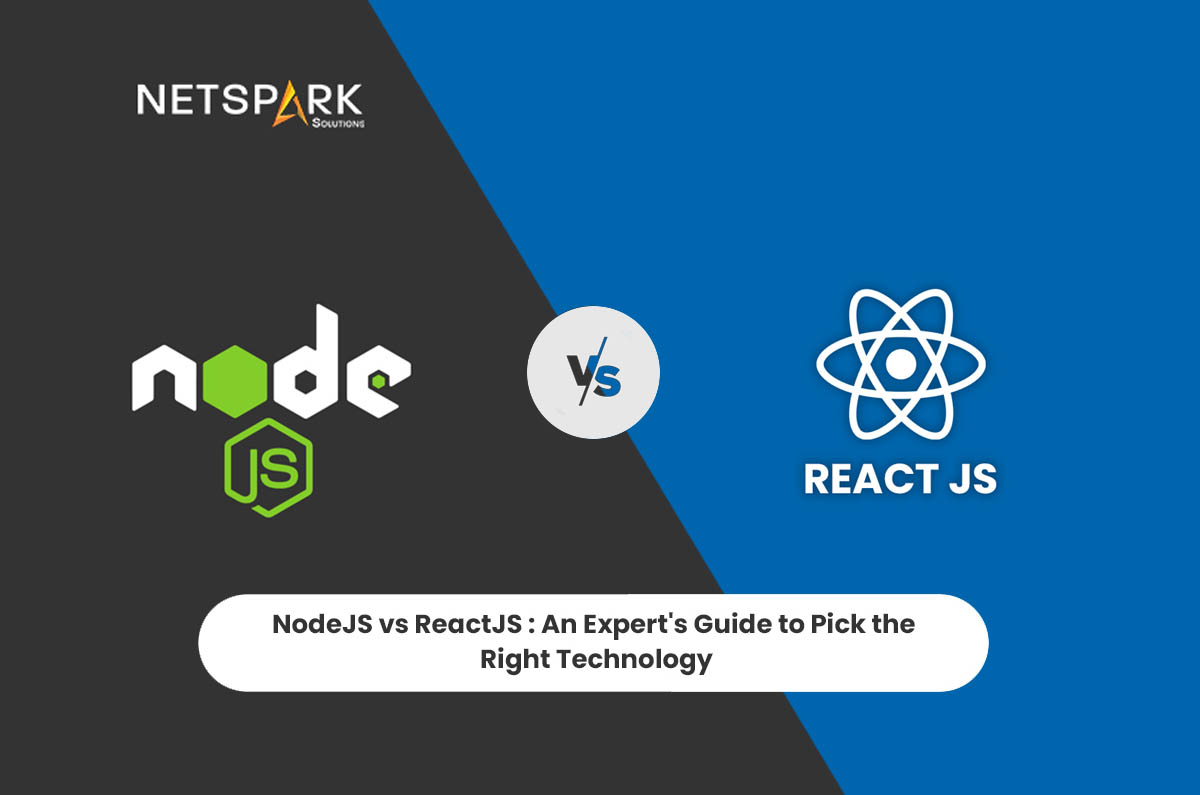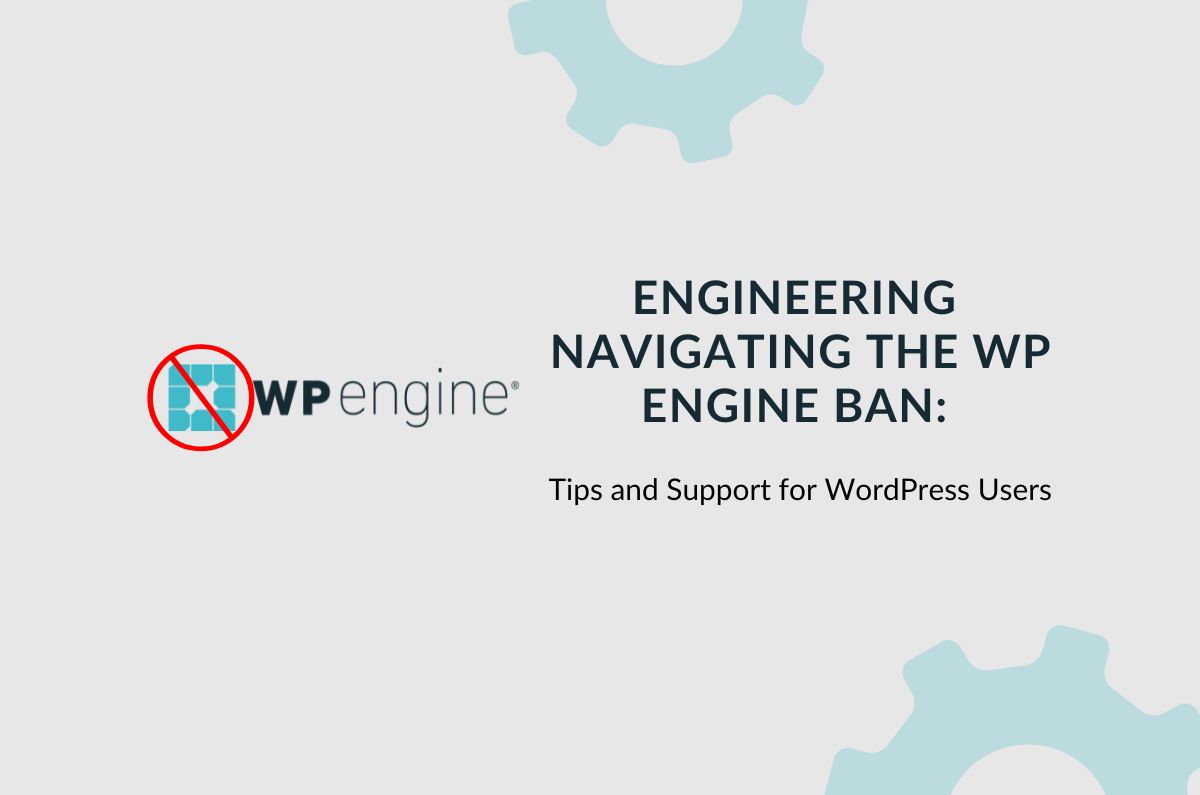After deciding to launch a website, the first hurdle that business owners have to tackle is choosing the right development technology for their product. Of course, if they have a reliable web development team by their side, making the right decision will be less hectic.
The developers will analyze the business requirements and choose the most reliable technology accordingly. However, as the product owner, it’s crucial to stay involved in the process and know which technologies are being used to develop the website/web app.
When it comes to web development, NodeJS and ReactJS are two of the most prominent development tools that every developer prefers using. They offer a multitude of benefits and allow developers to build visually engaging and dynamic websites. Unfortunately, many business owners are not familiar with the functionalities of these two development technologies.
Even though they both relate to JavaScript, NodeJS and ReactJS are poles apart from each other. The former is used to construct a robust backend for various digital solutions whereas ReactJS is a JavaScript library that developers use to craft the user interface for a website or web app.
In this guide, we’ll dive deeper into the differences between NodeJS and ReactJS and help you decide if they should be a part of your next tech stack or not.
So, without any further ado, let’s dive in.
What is NodeJS?
NodeJS is a Javascript-based backend framework that’s primarily used to build backends for websites and web applications. As compared to other backend development technologies, NodeJS is a lightweight backend framework and allows developers to build dynamic backends for their projects.
As of today, NodeJS is used by some of the most reputed companies including Netflix, Uber, Trello, etc. NodeJS uses event-driven and non-blocking models that make it an efficient backend framework for web developers.
A major advantage of using NodeJS for backend development is its non-blocking nature. Since NodeJS runs on the V8 Javascript engine (the same engine used by Google Chrome), it’s capable of executing concurrent operations without locking a single thread. In short, developers have the liberty to run simultaneous threads and execute multiple processes to unlock higher productivity.
Another benefit of NodeJS for backend development is its ability to perform real-time A/B testing to validate different user behaviors. Platforms like Netflix use NodeJS to cater to an extensive customer base (93 million active users) while performing real-time testing to deliver an exceptional user experience.
Its lightweight nature and extensive support for non-blocking I/O are the two biggest USPs that separate NodeJS from other available backend frameworks.
Key Features of NodeJS
Now that you’re familiar with the basics of NodeJS, let’s dive deeper and analyze the potential key features of the framework.
- Unlike other Javascript frameworks, NodeJS is open-source, which allows developers to utilize its functionalities for free.
- Through non-blocking I/O operations, developers have the liberty to enhance the overall performance of their websites and web applications
- NodeJS also has built-in API support for different server integration, allowing developers to manage DNS, HTTP, and TCP servers.
- Unit Testing and A/B testing are more convenient with NodeJS through an exclusive testing procedure known as Jasmine
- Since NodeJS supports multi-thread execution, developers can build scalable web applications without any hassle
When Should You Use NodeJS for Web Development?
Now, despite its extensive list of advantages, NodeJS is not a reliable backend framework in every situation. For small-scale web applications, NodeJS may not be the most optimal choice as it still requires heavy CPU rendering. However, if you’re planning to build a large-scale web platform like Netflix or Uber – that requires extensive functionality to engage customers, NodeJS will provide you with all the necessary tools to launch a scalable product.
An Introduction to ReactJS
ReactJS is a front-end Javascript library designed by Meta, formerly known as Facebook. ReactJS first came into the limelight when Facebook switched from its conventional platform to React.
Following the social media giant’s footsteps, platforms like Instagram and AirBnB also started designing their platforms using ReactJS. As of 2022, ReacJS is among the most popular JavaScript front-end libraries out there. According to Statista, nearly 42.62% of developers prefer ReactJS for their projects.
Now, there are several reasons that make ReactJS a reliable front-end library for web applications. For instance, ReactJS heavily boasts code reusability, which allows developers to reuse a chunk of code to design multiple front-end modules for their web applications. This makes the entire process more efficient and allows developers to deliver a faster time-to-market.
In addition to this, React provides one-way data binding that provides developers with better control over their applications. Let’s analyze the key features of ReactJS to understand its real-time applications in the web development community.
Key Features of ReactJS
- The virtual DOM increases the overall efficiency of React-based web apps as it can predict and retain user interface while automatically configuring it with the real DOM
- ReactJS also has multiple virtual components that make it a faster and more reliable front-end library for web applications.
- React offers multiple reusable components that speed up the entire development process and make it easier to design UI components for large-scale web applications
- ReactJS has JSX syntax, which resembles conventional HTML codes, making it easier for developers to get on board and start developing the project.
When Should You Use ReactJS?
Ideally, ReactJS is a dynamic front-end library that’s particularly designed to build interactive single-page web applications (like Facebook) that require dynamic real-time updates for user actions. If you are planning to develop a large-scale web application with dynamic UI components that offer better user interaction, ReactJS is your answer.
Can You Combine ReactJS and NodeJS for a Single Project?
Yes, you can use both ReactJS and NodeJS for a single project. Since both technologies are driven by Javascript, using them for full-stack web development will make the entire development process less hectic.
At its core, you’ll be using a single programming language for the entire project that’ll accelerate the time-to-market and reduce data redundancies. However, based on your project requirements, this combination may not be the most ideal choice. So, before you go ahead and choose these two development technologies for your web development project, make sure to sit with your web development team and validate if ReactJS and NodeJS are suitable for your project or not.
Conclusion
Considering both ReactJS and NodeJS are Javascript-based technologies, many business owners believe that they are designed to complete the same task. However, that’s not the case. Both ReactJS and NodeJS resolve a different purpose in the entire full-stack web development process. If you are not sure if either of these two technologies is ideal for your project, get in touch with Net Spark Solutions and we’ll help you validate the significance of ReactJS and NodeJS for your project.











